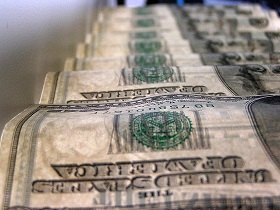 Confessions of a Quantitative Easer by Andrew Huszar
Confessions of a Quantitative Easer by Andrew Huszar
Dear Readers: For years I have reported that the Federal Reserve’s policy of Quantitative Easing, that is, bond purchases in order to support bond prices, is not an economic policy directed at helping the economy recover from the financial crisis caused by financial deregulation and irresponsible gambling and fraud by large banks and Wall Street. I have reported that the Federal Reserve’s policy is directed at supporting the balance sheets of “banks too big to fail.” Despite this obvious fact, presstitutes and economists pretend that QE has brought economic recovery and that QE will end as soon as the Federal Reserve judges the recovery to be sustainable without its bond purchases. Now we have a confession from Andrew Huszar, who was the Federal Reserve official in charge of Quantitative Easing. He says that QE is for the banks’ profits, not for the economy. - Paul Craig Roberts
Andrew Huszar: Confessions of a Quantitative Easer ■ I can only say: I'm sorry, America. As a former Federal Reserve official, I was responsible for executing the centerpiece program of the Fed's first plunge into the bond-buying experiment known as quantitative easing. The central bank continues to spin QE as a tool for helping Main Street. But I've come to recognize the program for what it really is: the greatest backdoor Wall Street bailout of all time. Five years ago this month, on Black Friday, the Fed launched an unprecedented shopping spree. By that point in the financial crisis, Congress had already passed legislation, the Troubled Asset Relief Program, to halt the U.S. banking system's free fall. Beyond Wall Street, though, the economic pain was still soaring. In the last three months of 2008 alone, almost two million Americans would lose their jobs. [...] And the impact? Even by the Fed's sunniest calculations, aggressive QE over five years has generated only a few percentage points of U.S. growth. By contrast, experts outside the Fed, such as Mohammed El Erian at the Pimco investment firm, suggest that the Fed may have created and spent over $4 trillion for a total return of as little as 0.25% of GDP (i.e., a mere $40 billion bump in U.S. economic output). Both of those estimates indicate that QE isn't really working. Unless you're Wall Street. Having racked up hundreds of billions of dollars in opaque Fed subsidies, U.S. banks have seen their collective stock price triple since March 2009. The biggest ones have only become more of a cartel: 0.2% of them now control more than 70% of the U.S. bank assets. As for the rest of America, good luck.





